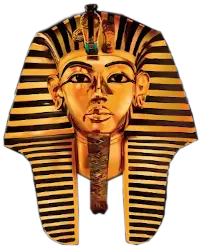
(d) The battle of Salamis, 479 B.C.
Both Persians and Greeks met again at Salamis in 479 B.C., and a naval engagement followed, with considerable loss of ships on both sides. Both belligerents withdrew without any decision.
(e) The confederacy of Delos and their wars with the Persians, 478-448 B.C.
The purpose of the confederacy was defense against Persian aggression, and two naval battles were fought: one at the river Eurymedon in 467 B.C., when the Greeks gained a minor victory, and the other at Cyprus in 449 B.C., when the island was captured by the Persians.
N.B.
Chariots were not used in any of these engagements.
B. Internal wars, i.e., the Peloponnesian wars, 460-445 B.C., and 431-421 B.C. respectively.
These wars were fought between the different Greek states, and their major engagements were maritime.
In 432 B.C. Athens blockaded Potidaea and Megara was excluded from Greek markets. In 431 B.C. Thebes attacked Plataea, and while a Peloponnesian army occupied Attica, an Athenian fleet raided Peloponnesus.
Pericles conducted the evacuation of Attica, the oligarchs at Corcyra were massacred, and after the seizure of Amphipolis; Nicias sued for peace 422 B.C.
N.B.
It is evident that Greek culture and tradition did not furnish Plato with the idea of the charioteer and winged steeds, for nowhere in their brief military history, (i.e., up to the time of Plato) do we find the use of such a war machine by the Greeks as a chariot. The only nearby nation who specialized in the manufacture of chariots and horse breeding was the Egyptians, as already mentioned.
And since the Judgment Drama in the Egyptian Book of
Topics
Greek Philospohy is Stolen Egyptian Philosophy
The Memphite Theology is the Basis of all Important Doctrines of Greek Philosophy
Greek Philosophy was Alien to the Greeks
Greek Philosophy was the offspring of the Egyptian Mystery System
The Egyptians Educated the Greeks
The Curriculum of the Egyptian Mystery System
The Pre-Socratic Philosophers and the teaching Ascribed to them
The Athenian Philosophers
1. Socrates
2. Plato
3. Aristotle